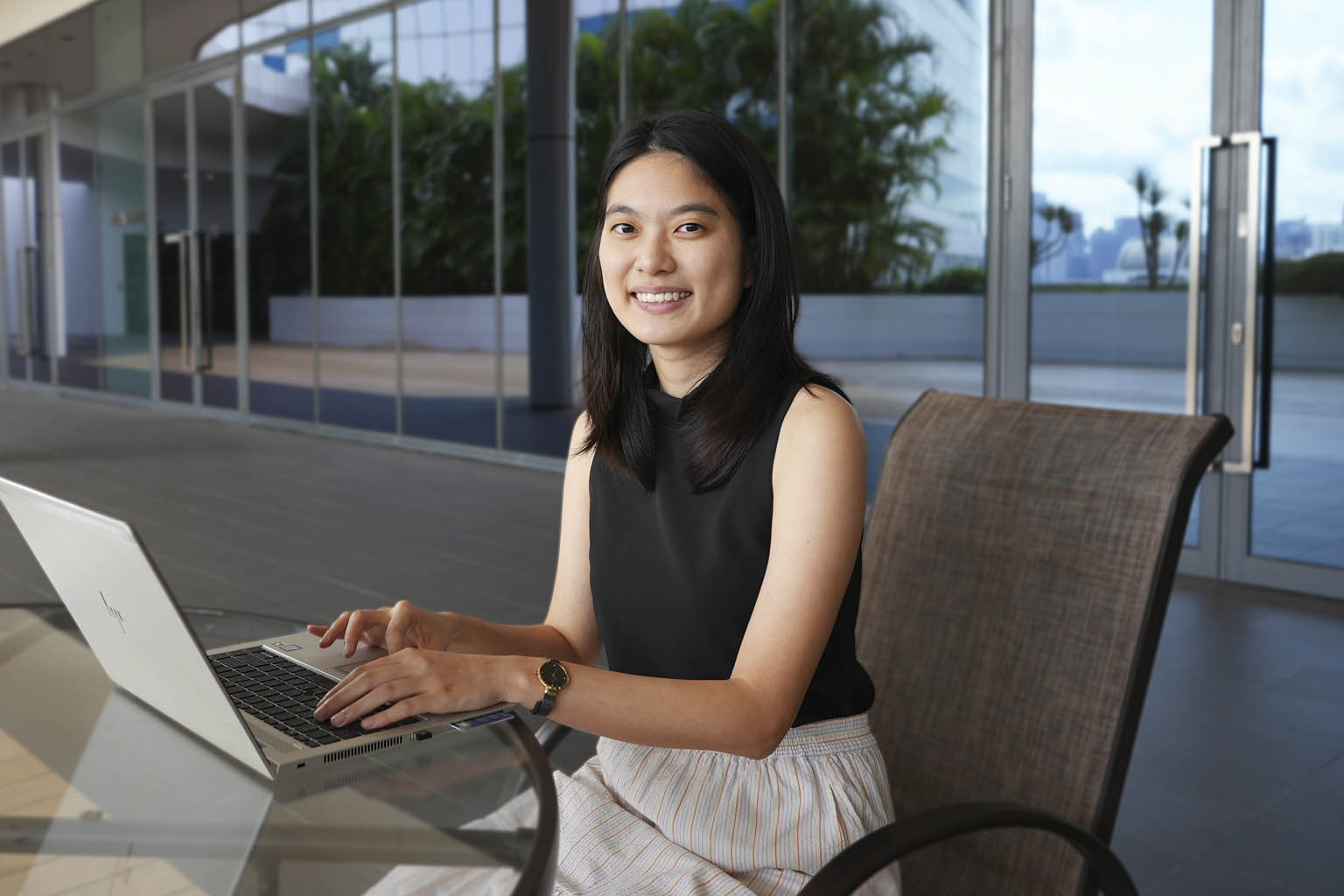
Solving problems has always been Ms Yang Shuli’s forte. As a child, she enjoyed mathematics and science in school.
In fact, she likes solving problems so much that even her career is centred around it.
“I have always been curious about the world around me, and the underlying principles behind how things work,” says the 25-year-old.
“It was natural for me to pursue electrical engineering at university, as it allowed me to peer into the inner workings of modern technology.”
| More on this topic: Using her problem-solving skills to create cutting-edge defence technology |
The Defence Science and Technology Agency (DSTA) Scholarship holder graduated from the National University of Singapore (NUS) with a bachelor’s degree in electrical engineering in 2019.
Studying at NUS gave her a strong foundation in electrical engineering but she was further stretched to her limits at the University of California, Berkeley in the US a year later.
While pursuing her master’s degree in electrical engineering and computer science, she not only interacted but also competed with some of the best talents from around the world. It was eye-opening and gruelling but “my year there was ultimately an invaluable experience”, she says.
Besides supporting her undergraduate and postgraduate studies, the DSTA Scholarship also offered her opportunities to gain real‑world experience from industry experts. She also attended a semester-long exchange programme at the Delft University of Technology in the Netherlands.
“I specifically enrolled in courses not commonly offered in Singapore,” says Ms Yang. “For example, I took an image processing course in which I designed and created an app for my final project. Similar to the music identification app Shazam, it identifies videos based on a short sample.”
There is also the Global Internship Programme for scholarship holders like Ms Yang to acquire insights through attachments with DSTA’s global industry partners.
“Threats are always evolving, so our defence technologies and capabilities have to keep up and adapt accordingly.”
– Ms Yang Shuli, recipient of the DSTA Scholarship
She spent six weeks after her undergraduate studies with marine electronics and systems specialist Atlas Elektronik in Germany. At its headquarters, she worked on passive sonar detection algorithms primarily used to detect noises from marine objects.
“These opportunities have allowed me to immerse myself in different learning, working, and living cultures,” she says. “It broadened my horizons and helped me grow as an engineer.”
Solving problems in the field
With experience gained from her attachments, Ms Yang brings a refreshed perspective to problem-solving and to her work at DSTA.
In her two-and-a-half years at the agency, she has been pushing the technological limits to ensure that “relevant information is shared for greater situational awareness and better decision making” for the Singapore Armed Forces (SAF) to achieve its targets swiftly and decisively.
The senior engineer at DSTA specialises in communication technology. Her work involves working on possible ways to improve connectivity for various platforms used by the Singapore Army and the Republic of Singapore Air Force.
“At DSTA’s Advanced Systems Programme Centre, I acquire, develop and integrate various engineering solutions across a spectrum of technologies to enhance the SAF’s defence capabilities,” she says.
“These include areas such as radio communications, satellite communications, and datalink techniques.”
Clear communications during military operations are imperative for instructions and feedback to be disseminated effectively. But it can also be challenging because the equipment used need to withstand rumble and tumble, and must also be designed for reliable transmission regardless of conditions.
“Threats are always evolving, so our defence technologies and capabilities have to keep up and adapt accordingly,” she says, adding that she is glad to make a direct impact on safeguarding Singapore and her loved ones.